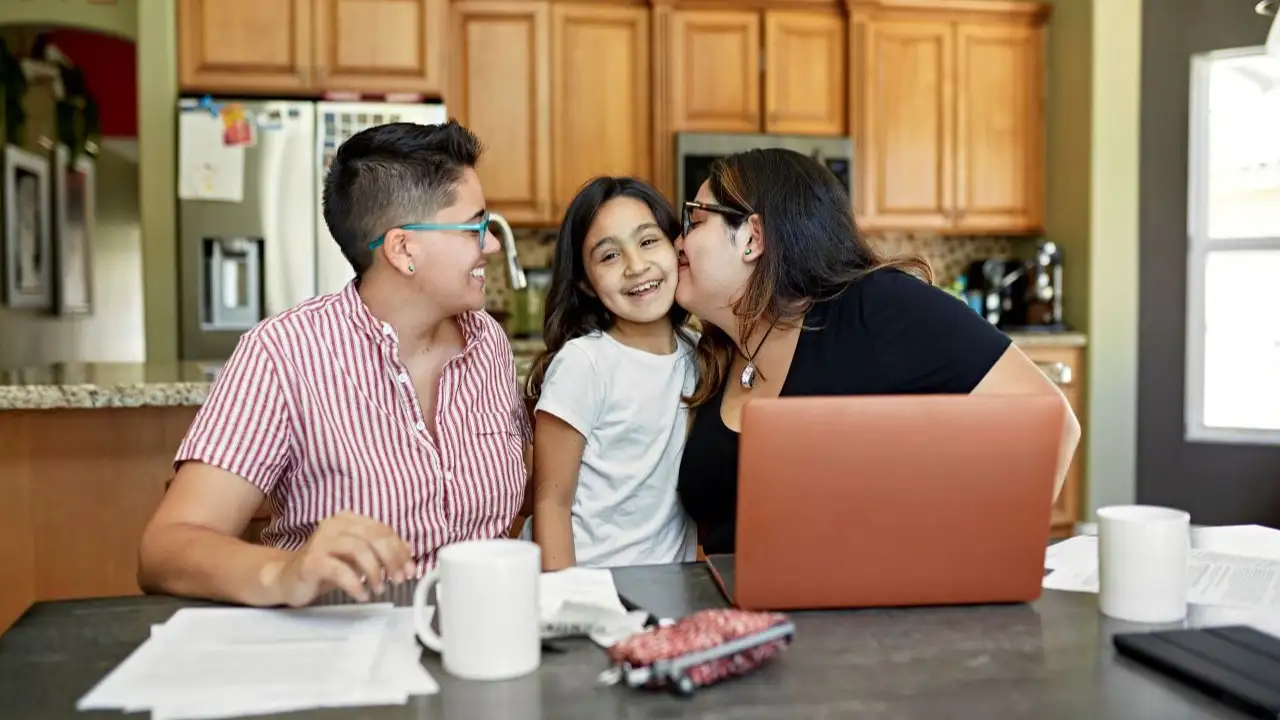
Money Tips & Education
Living paycheck-to-paycheck: strategies to break the cycle
Aug 29, 2024
Written by
Reviewed by
Key takeaways:
Living paycheck-to-paycheck can make it difficult to get ahead financially.
It could take more than budgeting to break the paycheck-to-paycheck cycle.
You might need help to get a handle on your income, expenses and debt.
On payday, money comes into your bank account. But before you know it, it seems to go right back out again. You’re keeping up with the bills but barely making a dent in your debt. And saving for emergencies? Forget about it.
If any of this sounds familiar, you’re not alone. The truth is that millions of Americans live paycheck-to-paycheck. Nearly 50% of workers say it would be a real struggle to keep up with their financial obligations if their checks were delayed by a week.
Breaking the paycheck-to-paycheck cycle isn’t easy. But we’ve got some practical ideas on how to do it and end money stress.
Taking control: strategies to overcome financial instability
When you live paycheck-to-paycheck, the size of that paycheck makes a huge difference. The less money you have coming in, the harder you might have to work to manage it (though a free budgeting app can help).
That doesn’t mean there aren’t any six-figure earners who live paycheck-to-paycheck. They’re out there. But it may be easier to break the cycle when there’s more money on the table. And it's more important to strive for financial freedom than simply "getting rich."
When your financial situation feels unstable, advice like “make a budget” doesn’t cut it. You’re probably doing that already, right? So here are some things you can focus on instead.
Prioritize needs. Basic needs include food, housing and utilities. Transportation might go here too if you need to be able to get back and forth to work every day. When you're living paycheck to paycheck, covering these expenses is the main goal. Once that's done, you can turn your attention to everything else.
Stop creating debt. This can be hard to do if you rely on credit cards when money is tight. But you can’t keep adding to your credit card debt if your financial situation is already on shaky ground. Put the credit cards away, and switch to debit cards or cash so you only spend money you actually have. And look into debt solutions to deal with the debt you have.
Keep records. A budget is a plan for assigning money where it needs to go—but you also need to track expenses so you know where it ends up. Whether you do it with a spreadsheet, budgeting app, or pen and paper, being able to see where your paychecks go can help you feel more in control of what’s happening with your finances.
Increase income, if you can. Cutting expenses can only take you so far if you’re living paycheck-to-paycheck. Even on a bare-bones budget, inflation can still make everything more expensive. Bringing in more money—whether it’s with a second job, part-time job, gig work, side hustle, or something else—can create some breathing room. No amount is too small, and even $50 or $100 extra each month can make a difference.
Here’s one more tip: Don’t compare. Seeing how other people live on social media or in real life can be discouraging if it seems they’re doing better than you.
You may feel pressured to try to maintain the same lifestyle, which can lead to debt. Or you might feel frustrated that you’re not making as much progress as you should be. Keep your eyes on your paper and don’t allow what others are doing to influence the way you manage your finances.
Building resilience: the role of emergency funds and long-term savings
Living in paycheck-to-paycheck mode may have put savings on hold. If there’s only so much money to pay the bills and cover expenses, there may be $0 left over for savings.
The fact is that you can’t afford not to save, even if your paychecks are stretched. If an emergency comes along and you don’t have the cash in savings to pay for it, you might have to turn to a credit card or high-interest loan.
That won’t help you get ahead at all. So it’s important to prioritize saving for emergencies even when it feels impossible.
Here are a few ideas on how to grow your emergency stash:
Open a high-yield savings account. Plenty of online banks will let you open a savings account with just $1. Having a separate account for emergency savings makes it easier to track your progress.
Set up automatic transfers. Consistency matters for saving, sometimes more than the actual amount you deposit. Automatic transfers could help you grow your savings with minimal effort. Even $5 or $10 per paycheck adds up over time if you save regularly.
Turn your stuff into savings. Overspending can leave you financially depleted and with a pile of stuff you don’t need. Selling things you no longer use can help declutter your house and give you some cash to save. It can also give you perspective on how much buying things really matters to you.
Save found money. Tax refunds, rebates, work bonuses—all those windfalls can be welcome if money is tight. And you might feel that you (or the kids) deserve a treat, so why not spend it? But the enjoyment of dinner out or new clothes fades. On the other hand, when you can handle a true emergency without going into debt, you could end up with a much bigger sense of satisfaction..
How much should you save for emergencies? The traditional rule of thumb is three to six months’ worth of expenses.
If you’re just getting started, you might aim for $500 or $1,000 instead. Once you’ve got a baby emergency fund in place, work on adding to it.
Your total savings should take into account your:
Income and job stability
Expenses
Household size
You might set a per-person savings goal if you have kids, instead of basing it just on monthly expenses. For example, if you’re married with two kids, you might shoot for $5,000 per person in the long term, for a total emergency fund of $20,000.
Remember that it might take months or even years to reach your goal. The important thing is to stay focused on why you’re taking the journey to save in the first place.
Seeking support: resources for financial assistance and guidance
Sometimes, doing all that you can to break the paycheck-to-paycheck cycle just isn’t enough. Or you might be completely overwhelmed by the thought of trying to get ahead.
Help is out there for you, and there’s nothing wrong with seeking it. And it can be a relief to talk to someone who understands what you’re going through and can offer solutions.
If you’re looking for debt help, here are a few options you might consider.
Consider talking to a debt expert for advice on how to manage and pay off credit cards or other debts.
If budgeting is a challenge, meet with a credit counselor to go over your expenses and income.
Look for free financial coaching or counseling locally. Nonprofits, universities, and credit unions are places you might be able to find help.
Living paycheck-to-paycheck doesn’t have to be forever. Being realistic about your finances and what you can do (and when you might need help) is the first step in turning things around.
What’s next?
Review your budget to see if there’s anything you’ve overlooked that you might be able to cut out.
Brainstorm a list of ways to make extra money or increase your income.
Delete any saved credit card information from the websites you shop at most often so it’s not as easy to spend.
Author Information
Written by
Rebecca is a senior contributing writer and debt expert. She's a Certified Educator in Personal Finance and a banking expert for Forbes Advisor. In addition to writing for online publications, Rebecca owns a personal finance website dedicated to teaching women how to take control of their money.
Reviewed by
Jill is a personal finance editor at Achieve. For more than 10 years, she has been writing and editing helpful content on everything that touches a person’s finances, from Medicare to retirement plan rollovers to creating a spending budget.
Frequently asked questions
What does it mean to live paycheck-to-paycheck?
Living paycheck-to-paycheck means that once you get paid and cover expenses, there’s nothing left until you get paid again. People who live paycheck-to-paycheck may lack emergency or long-term savings, and they may be in debt if they use credit cards to cover expenses. Paycheck-to-paycheck living can be the result of an income problem, a spending problem, or a combination of factors such as heavy medical expenses.
What are some effective strategies to reduce expenses when living paycheck-to-paycheck?
Some of the best ways to cut expenses when living paycheck-to-paycheck are:
Cancel subscription services you don’t need or use.
Plan meals around what’s on sale, and use coupons or cashback apps to save on groceries.
Raise your car insurance deductible or shop around for a cheaper policy.
Take advantage of your local library, especially if you have kids and need some fun (and free) things to do.
Downsize your home or vehicles, if possible.
What’s the ideal paycheck breakdown?
There is no ideal paycheck breakdown since everyone’s financial situation is different. For a simple framework, you might consider the 50/30/20 budget. With this budgeting system, you allocate 50% of your take-home pay to needs, 30% to wants, and 20% to savings and debt repayment. You could adjust the percentages up or down to match how you spend.
Related Articles
Some credit checks affect your score, but others don’t, even from the same lender. We’ll explain when and why credit checks can affect your credit.
Jane Meggitt
Author
Myth-busting: you don’t need to carry a credit card balance to have good credit! Learn how credit utilization affects credit scores.
Rebecca Lake
Author
Ready to take control of your money? Learn what a budget can do for you and how to make one.
Rebecca Lake
Author
Some credit checks affect your score, but others don’t, even from the same lender. We’ll explain when and why credit checks can affect your credit.
Jane Meggitt
Author
Myth-busting: you don’t need to carry a credit card balance to have good credit! Learn how credit utilization affects credit scores.
Rebecca Lake
Author
Ready to take control of your money? Learn what a budget can do for you and how to make one.
Rebecca Lake
Author


